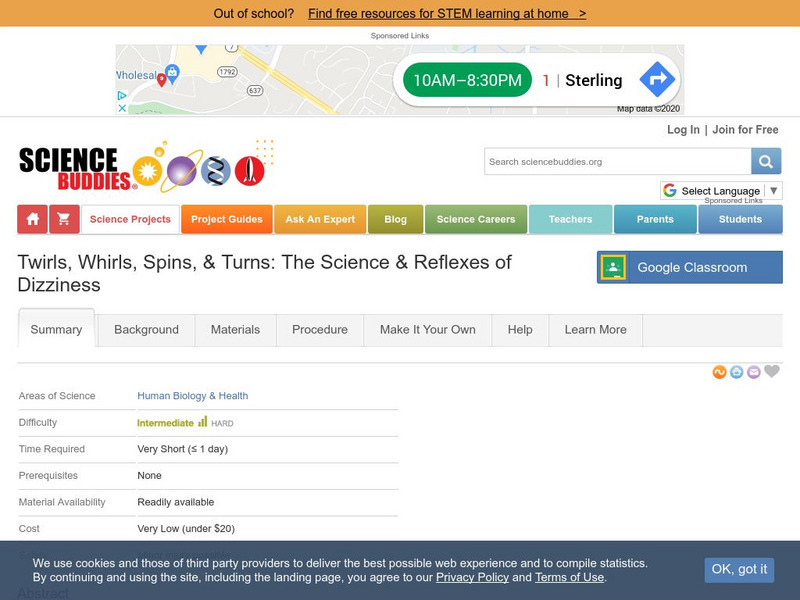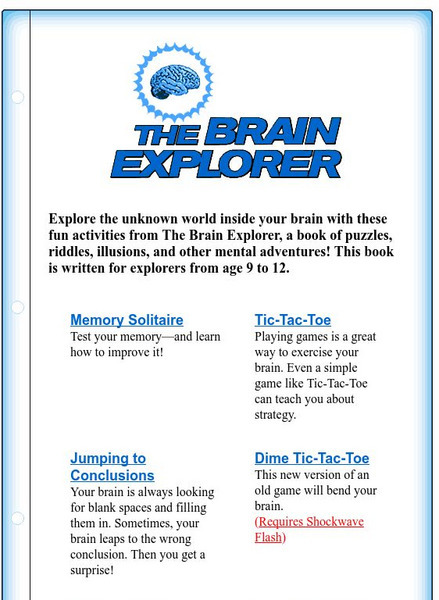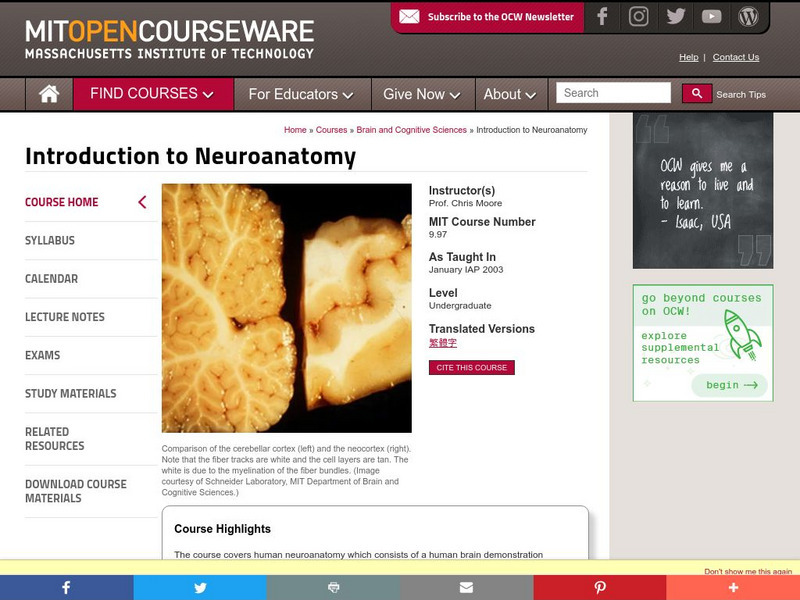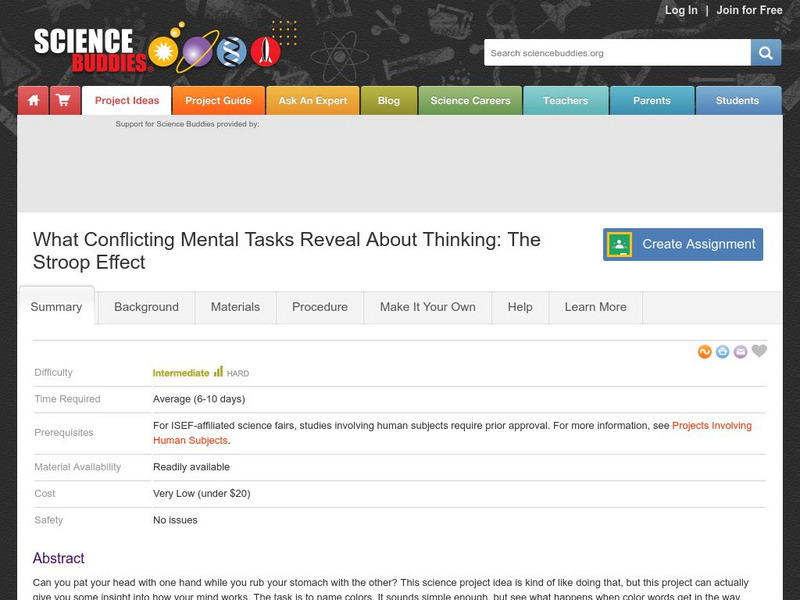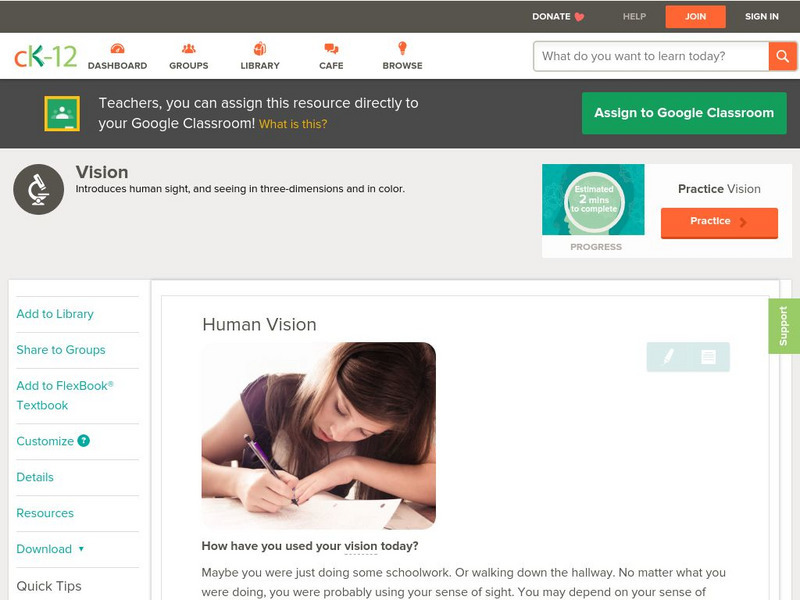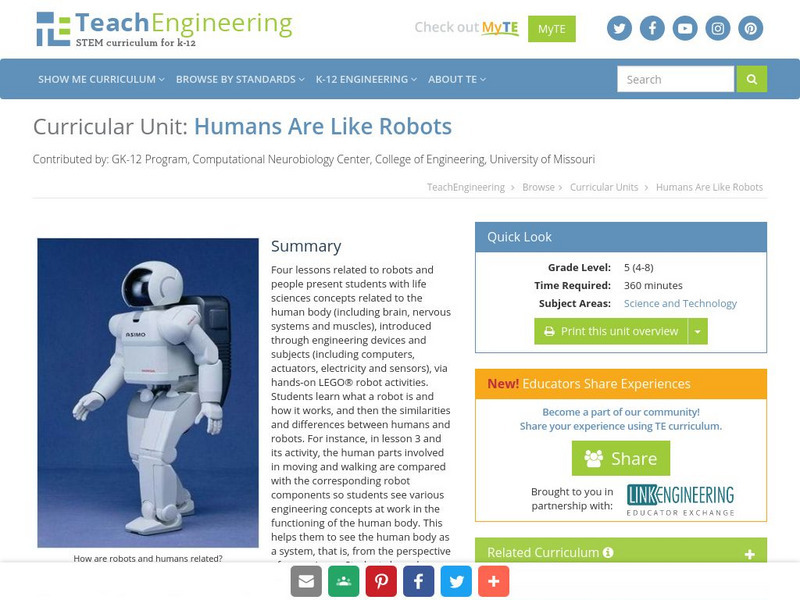Science Buddies
Science Buddies: Twirls, Whirls, Spins, & Turns: Reflexes & Dizziness
Tilt-A-Whirls, Merry-Go-Rounds, Spinning Tea Cups. Just the thought of these rides is enough to make someone dizzy, or queasy. Learn about spins, turns, and the mixed signals that fire in our brains when the sensation of dizziness takes...
BBC
Bbc: Human Anatomy: Organs
Explore the anatomy of the human body. Click on an organ or other body part to read more about its structure and function, and then try out an interactive activity for that organ.
Science Buddies
Science Buddies: Think Fast: Do Video Game Players Have Faster Reaction Time
Are you an avid video game player? Do you think this helps you have fast reaction times? This Science Buddies science project lays out an experiment to help you test your hypothesis. The Science Buddies project ideas are set up...
CK-12 Foundation
Ck 12: Life Science: Organization of the Human Body
[Free Registration/Login may be required to access all resource tools.] Cells, like these nerve cells, do not work in isolation. To send orders from your brain to your legs, for example, signals pass through many nerve cells. These cells...
CommonLit
Common Lit: Text Sets: Science of the Body
Introduce students to how the body looks and works with these texts on biology and genetics. This collection includes 20 Grade-Leveled texts (5-10) on the topic of Science of the Body. [Free account registration required for specific...
Exploratorium
Exploratorium: The Brain Explorer
Six games and puzzles taken from a book published by the Exploratorium, The Brain Explorer.
CK-12 Foundation
Ck 12: Life Science: Central Nervous System
[Free Registration/Login may be required to access all resource tools.] The central nervous system (CNS) is the largest part of the nervous system. It includes the brain and the spinal cord. The bony skull protects the brain. The spinal...
Massachusetts Institute of Technology
Mit: Open Course Ware: Courses: Introduction to Neuroanatomy
College-level online biology course focusing on the anatomy of the human brain. Course highlights include an intensive introduction to neuroanatomy. Course features include lecture notes outline, quizzes, study notes, and an extensive...
Scholastic
Scholastic: Study Jams! Science: The Human Body: The Nervous System
A video and a short quiz on the central and peripheral nervous systems.
Science Buddies
Science Buddies: What Conflicting Mental Tasks Reveal About Thinking
Can you pat your head with one hand while you rub your stomach with the other? This experiment is kind of like that, but it can actually give you some insight into how your mind works. The task is to name colors. It sounds simple enough,...
Science Buddies
Science Buddies: Warped Words and the Stroop Effect
The Stroop effect describes an experiment about the time it takes to name the color of printed words. When you try to name the color in which color words are printed, it takes longer when the color word differs from the ink color than...
Wisc-Online
Wisc Online: Psychology: Brain & Behaviour
Test your speed in this game reviewing brain and behavior terms and concepts.
Australian Broadcasting Corporation
Australian Broadcasting Corporation: News in Science: Whale Brains Are Part Human
From ABC News in Science, this article discusses research behind a brain cell discovered in humpback whales that is only found in human brains.
Other
Aaas Science News: Week of 2 24 14: How Dogs Know What You're Feeling
Article reports on groundbreaking research which looked at brain scans of dogs and discovered that, like humans, their brains have a voice processing center, which helps explain why dogs are so attuned to human emotions.
Massachusetts Institute of Technology
Mit: Open Course Ware: Courses: Brain Cognitive Science: Cognitive Neuroscience
College-level online neuroscience course focusing on human memories. Course highlights how memories are created and controlled, and how we are able to remember the past. Course features include readings and related resources on the topic.
CommonLit
Common Lit: Text Sets: Psychology and the Mind
The mind has fascinated and mystified humans for millennia. Delve into the science behind the brain with these works on philosophy, foundational psychology, and scientific studies. This collection includes 61 Grade-Leveled texts (6-12)...
CK-12 Foundation
Ck 12: Life Science: Human Vision
[Free Registration/Login may be required to access all resource tools.] Sight, or vision, is the ability to see light. It depends on the eyes detecting light and forming images. It also depends on the brain making sense of the images, so...
CK-12 Foundation
Ck 12: Life Science: 11.43 Peripheral Nervous System
Understand the structure and function of the peripheral nervous system in the human body.
CK-12 Foundation
Ck 12: Life Science: 11.45 Nervous System Injuries
Learn about some injuries to the human nervous system.
Exploratorium
Exploratorium: Science Snacks: Proprioception
The human body has proprioceptors that send signals to the brain so that we are aware of our body's position and movements. Try these simple experiments to learn about proprioception and about other visual and tactile clues that assist...
Science Buddies
Science Buddies: The Nose Knows Smell but How About Taste?
As if sniffles and clogged sinuses are bad enough, everything seems to taste bland and flavorless when we are sick. Gather up a few volunteers, hit the kitchen, and try this experiment to find out if there is really truth to the idea...
TeachEngineering
Teach Engineering: Humans Are Like Robots
Four lessons related to robots and people present students with life sciences concepts related to the human body (including brain, nervous systems and muscles), introduced through engineering devices and subjects (including computers,...
Ducksters
Ducksters: Biology for Kids: Nervous System in the Human Body
Kids learn about the science of the Nervous System in the human body. Brain, spinal cord, and nerves communicate.
Georgia Department of Education
Ga Virtual Learning: Anatomy and Physiology: Nervous System
Through informational text, interactive activities, self-checking practice problems, and more, students learn about the human nervous system.


